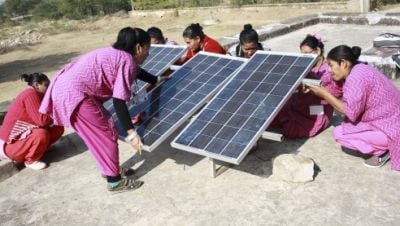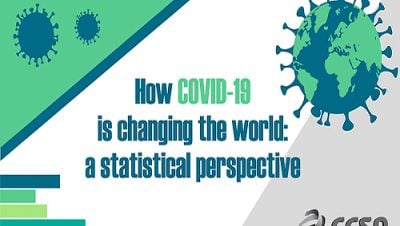The 2030 Agenda and the Sustainable Development Goals (SDGs) set a very ambitious vision for what humanity needs to accomplish by the year 2030. With just 10 years left, the United Nations system has declared a Decade of Action, with an urgent call for accelerating efforts towards achieving the SDGs. Fundamental to these efforts is the rethinking of the role of science, finance and policy alike. But beyond progress in each of these areas separately, the interaction between science and policy is critical to tackling global challenges and achieving the SDGs.
This two-year project is an important step towards informing this science-policy dialogue and is funded by the Global Challenges Research Fund UK Research and Innovation. STRINGS consists of a collaboration between the United Nations Development Programme(UNDP), research centers and seven leading universities, aiming at mapping the complex relations between research in science, technology and innovation (STI) on the one hand, and the SDGs on the other. This research will be published as a report in 2021, and it will deepen our understanding of the variety of science, research, technology and innovation pathways that may contribute to SDGs.
Why are science, research and innovation important for achieving the SDGs, and why should we ‘steer’ them? A good example is the case of inequalities, which are not only explicit in SDGs 5 (on gender equality) and 10 (on inequalities in all their forms), but also key to achieving many other SDGs which call not just for improving the averages but also the distribution of development gains. It has been shown that a more inclusive societies, for example, also have positive effects on innovation and structural change.
The 2019 Human Development Report (HDR) looked at Inequalities in Human Development. One of the lessons from the report is that, in spite of progress in reducing inequalities in basic capabilities (primary education, infant and child health, access to cellular phones), we cannot rest on our laurels: the goalposts of development are constantly shifting. In fact in many more advanced capabilities inequalities have worsened, with more developed countries diverging from the rest in aspects of life that are vital for success in the 21st century – secondary and tertiary education, and access to broadband connections. Inequality reduction – both within and between countries - is a moving target. It requires new research and measurement to understand what to do.
Another lesson from the report is that, in spite of much research, we still have many blind spots as to where the needs are the greatest. Again, we need more research, better measurements and more informed policy. The 2019 HDR advocates for a revolution in metrics to fill the many inequality data gaps and to go systematically beyond averages. This starts with gaps in some of the most basic statistics, with many developing countries still lacking vital registration systems. Much more research is also needed on uncovering the many types of inequality beyond income, such as dignity and recognition. For example, the use of Artificial Intelligence in facial recognition programs can enhance safety, but may often implicitly propagate human biases.
A third lesson from the 2019 HDR is that the progress of science, technology and innovation is not predetermined. It can be steered by society:
“Technological change does not occur in a vacuum but is shaped by economic and social processes. It is an outcome of human action. Policymakers can shape the direction of technological change in ways that enhance human development. For instance, artificial intelligence might replace tasks performed by people, but it can also reinstate demand for labour by creating new tasks for humans, leading to a net positive effect that can reduce inequalities”. In other words, technology is a good servant but a bad master. And even as a servant, technology has the potential to increase inequality since its owners often benefit from it greatly while others are excluded.
The collaboration between scientists and researchers, on the one hand, and policymakers on the other, takes many forms beyond the STRINGS project. Indeed, on 18 February, UKRI and UNDP signed a memorandum of understanding establishing a formal knowledge partnership (see here for a video of the opening discussion). An inaugural workshop brought together researchers and innovators from both our global networks, to explore opportunities for collaboration from experimentation to analyses of long-term development trends.
The link between science and SDGs was also outlined in the latest SDG Report (2019), titled The Future is Now: Science for Achieving Sustainable Development. The report stressed that science was indispensable for ending poverty and hunger, handling climate change, reducing inequalities and achieving the SDGs in general. It highlighted the need to bridge the gap between research, science and knowledge, on the one hand, and policy on the other, and that promoting knowledge-based action requires an increase in the resources and support available to scientists and research institutions. As shown above, however, it is critical to keep in mind the distributional effects of any STI policy.
In conclusion, it is clear from all of the above that science, research, technology and innovation are all critical components of the Decade of Action to achieve the SDGs. It is also clear, however, that the link between knowledge and action is not automatic, and needs to be cultivated, supported and steered to where it is most needed. Science can inform policy, but policies can (and should) direct science towards the greater (and more equal) good.
*This blog post was originally featured on the STRINGs website.*


